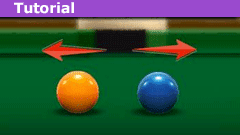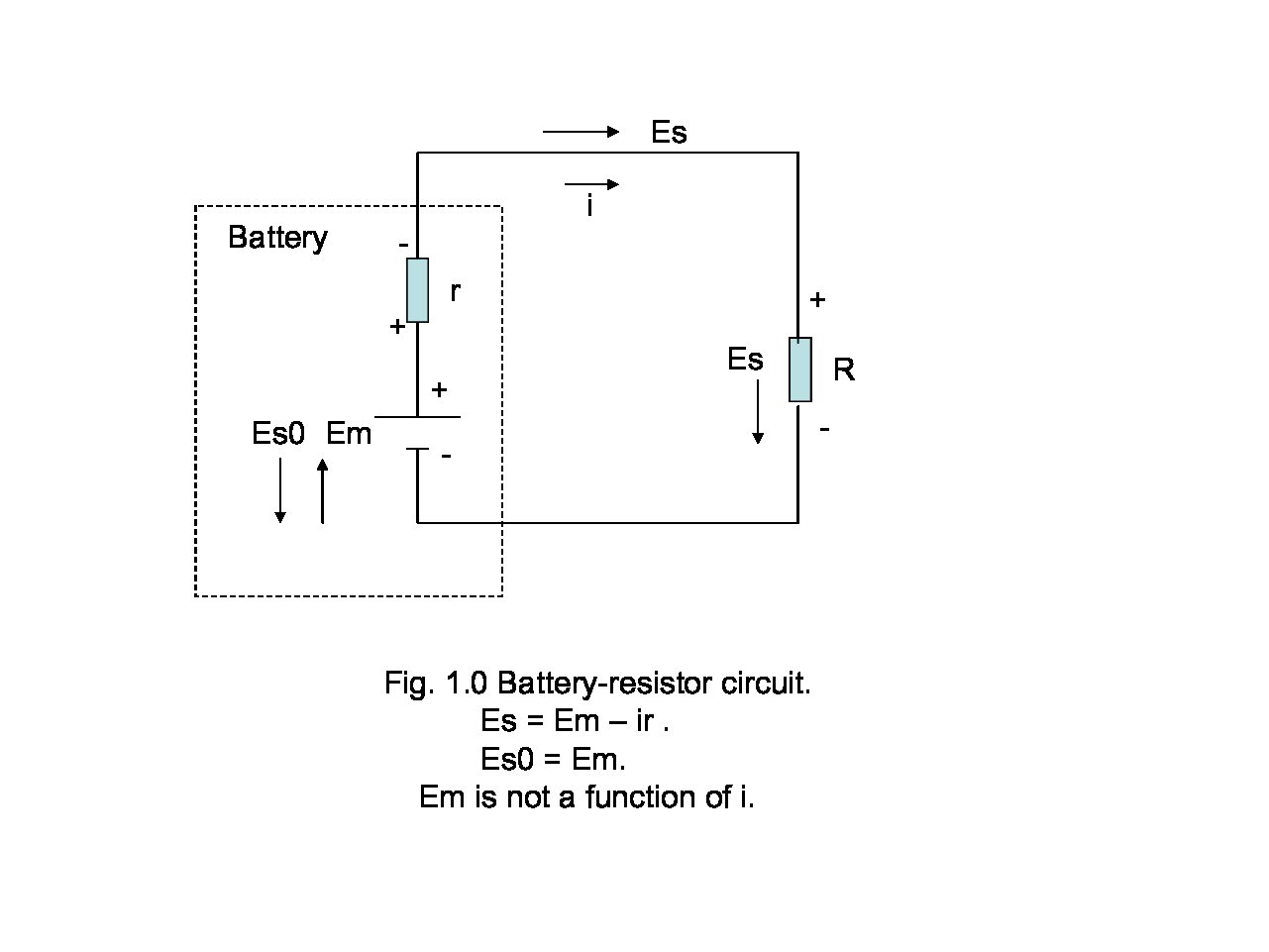An Alternate Approach to Solving 2-Dimensional Elastic Collisions
Table of Contents
Introduction
This article follows on from the previous on an alternate approach to solving collision problems. In that article, we determined the equal and opposite collision impulse to have magnitude ##\mu \Delta v## for perfectly inelastic collisions, ##\mu(1+e) \Delta v## for semi-elastic collisions, and ##2\mu \Delta v## for elastic collisions which will be the focus here. Reduced mass ##\mu=\frac{m_1m_2}{m_1+m_2}## – where ##m_1## and ##m_2## are the colliding masses – and ##\Delta v## is their relative velocity along the line of collision. e is the coefficient of restitution.
Since the previous article focused on 1-dimensional collisions, the aim here is to develop a method of solving 2-dimensional elastic collision problems using a Cartesian plane in which the x and y axes are defined to be respectively parallel and perpendicular (normal) to the line of collision. The latter is defined by the post-collision direction of the stationary mass since it cannot attain momentum except along the line of collision. Angles of ‘incidence’ and ‘refraction’ are measured concerning the normal – ie the y-axis which is in the direction of the common tangent line to the colliding spheres.
We also aim to show why it is that post (elastic) collision trajectories of equal masses are at right angles and to explore the physics of ‘maximum deflection’ in the situation in which the heavier mass is in motion and collides with a lighter stationary mass.
Physics of an Elastic 2-Dimensional Collision
The start point for our analysis will be the following diagram which shows a moving mass m at the point of collision with stationary mass km (ie mass ratio red: green is 1:k):

For the sake of simplicity, we assume that the colliding masses are in the form of spheres having the same radius but different densities to account for the difference in mass. If k>1 then the lighter mass is incident on the heavier and vice versa for k<1. The reader is asked to visualize the line of collision as being fixed along the x-axis with the moving mass m traveling at any given angle of incidence in the range ##0 < θ_i < 90°## where ##θ_i## is measured from the y-axis as shown. After the collision, the moving mass loses momentum in the x-direction and thus deflects (‘refracts’) toward the normal now forming angle ##θ_r## with the y-axis. (It should be noted that the diagram above depicts a situation with k<1 otherwise the moving mass will experience ‘negative refraction‘ with ##\theta_r## on the same side of the normal as ##\theta_i##). The post-collision velocity of the stationary mass is constrained to be along the line of collision (x-axis) since the collision impulse ‘transmits’ only along this line.
Components of Momentum
The initial momentum of the red mass is: $$\vec{p_{1i}}=m(v\sinθ_i) \hat{i} +m(v\cosθ_i) \hat{j}$$Collision impulse acts along the x-axis and – since this is an elastic collision – we may write (using the formula given above): $$\vec{\Delta p} = 2\mu \vec{\Delta v} = 2 \frac{km^2}{m(k+1)} (v\sinθ_i) \hat{i} = \frac{2k}{k+1} m(v\sinθ_i) \hat{i}$$Since the green mass is initially stationary its post-collision momentum will be simply ##\vec{\Delta p} ## and all we need do is divide by km to obtain the post-collision velocity $$ v_{2f} = \frac{2}{k+1} (v\sinθ_i) \hat{i}$$
Turning our attention to the post collision momentum of the red mass, we note that it will experience an equal and opposite collision impulse as compared to that of the green mass: $$\vec{\Delta p} = \frac{-2k}{k+1} m(v\sinθ_i) \hat{i}$$ Hence the final momentum of the red mass will be $$\vec{p_{1f}}=\left( m(v\sinθ_i) -\frac{2k}{k+1} m(v\sinθ_i) \right) \hat{i} +m(v\cosθ_i) \hat{j}$$ $$\vec{p_{1f}}=\left( \frac{1-k}{1+k} m(v\sinθ_i) \right) \hat{i} +m(v\cosθ_i) \hat{j}$$From this expression for the final momentum of the red mass, we can immediately determine an expression similar in form to Snell’s law in optics relating angle of incidence ##\theta_i## and angle of refraction ##\theta_r##: $$\tan\theta_r=\frac{1-k}{1+k}\tan\theta_i$$ The difference from the classical form of Snell’s law is that this expression relates tan(s) rather than sine(s) of the respective angles of incidence and refraction.
Observations Relating to the Angle Relationship
The very first observation we can make is that if k=1, we obtain the result that ##\theta_r=0##. In other words after the collision, the incident mass travels along the y-axis and the impacted mass along the x-axis. Without further ado, we have proven the result that in an oblique elastic collision between two equal masses, the post-collision trajectories are at right angles to each other. Physically what happens is that the initial component of momentum along the x-axis (for the red mass) is transferred completely to the green mass leaving the former only with its component of momentum along the y-axis.
If k>1 then the collision impulse will be greater than the initial x-component of momentum and so the red mass will experience ‘negative refraction’ since ##\theta_r<0##. In optics ‘negative refraction’ is a somewhat rare but interesting phenomenon described in the following online article in Physics World.
If k=0, then the mass in motion is infinitely large compared to the stationary mass and will not deflect at all (##\theta_r=\theta_i##). Conversely if k=∞, the stationary mass is infinitely large and the moving mass will simply bounce off it (##\theta_r=-\theta_i##).
Maximum Angle of Deflection
This is only applicable in the case where the larger mass is in motion (ie k<1 in the above analysis).
The angle of deflection is given very simply by the difference between incident and refracted angles ##\theta_i – \theta_r##. We seek to maximize this angle and since tan(x) is an increasing function of x, maximization of ##tan(\theta_i – \theta_r)## will achieve the same end. From the above we have: $$\tan\theta_r=\frac{1-k}{1+k}\tan\theta_i$$ Writing ##\kappa=\frac{1-k}{1+k}##, our expression for ##\tan(\theta_i – \theta_r)## becomes $$\frac{\tan \theta_i+\kappa \tan \theta_i}{1 + \kappa \tan^2 \theta_i}$$ Differentiating this expression we obtain: $$ \frac{(\kappa – 1) \sec^2\theta_i(\kappa \tan^2\theta_i-1)}{(1 + \kappa \tan^2\theta_i)^2}$$ The solution ##\kappa=1## corresponds to the mass ratio being zero in which case ##\theta_i=\theta_r## and there will be no deflection at all. Hence for maximum deflection we have ##\tan\theta_i=\sqrt{\frac{1}{\kappa}} ## and ##\ tan\theta_r=\kappa tan\theta_i=\sqrt{\kappa} ##. Since these values are reciprocals of each other, it follows that the incident and refracted angles are complementary – a situation corresponding to the Brewster angle in optical refraction. It is well established that for angle of maximum deflection ##\sin\theta_d=m/M=k## and we can show similarly: $$\tan\theta_d=\frac{\tan \theta_i+\kappa \tan \theta_i}{1 + \kappa \tan^2 \theta_i}=\frac{\frac{1}{\sqrt{\kappa}}-\sqrt{\kappa}}{2} = \frac{1-\kappa}{2\sqrt{\kappa}}$$ $$\sin \theta_d=\frac{1-\kappa}{1+\kappa}=k=m/M$$
Transmitted and Refracted Energy
The ‘transmitted’ energy is just that attained by the stationary mass which is easily calculated as $$\frac {{\mid\vec{\Delta P}\mid}^2}{2km}=\frac{4km{v_{1i}}^2\sin^2\theta_i}{2(k+1)^2}=KE_i\times\frac{4k\sin^2\theta_i}{(k+1)^2}=KE_i\times\frac{2k(1-\cos2\theta_i)}{(k+1)^2}$$ The ‘refracted’ energy is that retained by the mass initially in motion: $$KE_i-\frac {{\mid\vec{\Delta P}\mid}^2}{2km}=KE_i\times\frac{k^2+2k\cos2\theta_i+1}{(k+1)^2}$$ with ##KE_i=½m{v_{1i}}^2## being the pre-collision energy of the moving mass.
At the angle of maximum deflection, it can be shown that ##\cos2\theta_i=-k## in which case the expressions for transmitted and refracted energy simplify somewhat:
Transmitted energy: $$KE_i\times\frac{2k(1+k)}{(k+1)^2}=KE_i\times\frac{2k}{1+k}=KE_i\times\frac{2m}{m+M}$$
Refracted energy: $$KE_i\times\frac{1-k^2}{(k+1)^2}=KE_i\times\frac{1-k}{1+k}=KE_i\times\frac{M-m}{M+m}$$
In the above equations, m is the smaller mass, and M=km is the larger. We note in passing (without being able to advance any associated reasoning for the similarity) that these expressions are similar in form to those for the transmission and reflection coefficients when normally incident light waves pass through an optically denser thin block:
Transmission coefficient: $$\frac{2\nu_1}{\nu_1+\nu_2}$$
Reflection coefficient: $$ \frac{\nu_1-\nu_2}{\nu_1+\nu_2}$$
Here ##\nu_1## and ##\nu_2## are the refractive indices of the less (optically) dense and more dense mediums respectively.
Worked Examples
Armed with the equations developed above, we now turn our attention to some typical 2-dimensional collision problems. The reader is welcome to attempt these problems using conventional methods by way of comparison to the technique we will be using here. In the previous article on collisions, worked examples used were drawn from MIT problem sets (Problem Set 9), and for this article, we begin with another (Problem 6) from the same source:

Here the mass ratio k=2 so ##\kappa = \frac{1-2}{1+2}=\frac{-1}{3}##. Angle of incidence is the same as the collision angle (45°). Hence: $$\tan \theta_r=\frac{-1}{3}\tan45°=\frac{-1}{3}⇒\theta_r=\arctan(-1/3)=-18.43°$$ Note that ##\theta_r<0## indicates ‘negative refraction’. ##\theta_{A,f}## is the angle of deflection of A:
$$\theta_{A,f}=\theta_i-\theta_r=45°-(-18.43°)=63.43°$$ A later version of the problem requested ##\tan\theta_{A,f}## rather than the angle itself: $$\tan\theta_{A,f}=\frac{\tan 45°+\frac{1}{3}}{1-\frac{1}{3}\tan 45°}=2$$
The next problem we solve is Example 8.12 (Page 108) taken from a set of notes on collision theory from the University of Minnesota (Duluth):

Here ##\beta## is the collision angle so ##\beta=90-\theta_i##.
Mass ratio k=0.6 so ##\kappa=\frac{1-06.}{1+0.6}=\frac{1}{4}##.
Let ##\tan\theta_i=p⇒\cos \theta_i=\frac{1}{\sqrt{1+p^2}}##.
##\tan \theta_r=\kappa p =\frac{p}{4}⇒\cos \theta_r=\frac{4}{\sqrt{16+p^2}}##.
Since puck A does not experience any change in momentum along the normal, we can simply solve the equation: $$4\cos\theta_i=2\cos\theta_r⇒4\frac{1}{\sqrt{1+p^2}}=2\frac{4}{\sqrt{16+p^2}}$$ From which we obtain: $$4(1+p^2)=16+p^2$$ ##p=2⇒\theta_i=\arctan(2)=63.43°##.
##\tan\theta_r=¼p=½⇒\theta_r=\arctan(½)=26.57°##.
##\beta=90-\theta_i=26.57°##
Angle of deflection ##\alpha=\theta_i-\theta_r=\arctan(2)-\arctan(½)=36.87°##. Note that this is the angle of maximum deflection (for a mass ratio of 0.6) since ##\theta_i+\theta_r=90°##.
Summary and Conclusions
In this article we have established an angular relationship between the incident and refracted/reflected angles resulting from the elastic collision of moving mass m with stationary mass km: $$\tan\theta_r=\kappa \tan\theta_i\text{ with }\kappa=\frac{1-k}{1+k}$$ The theory rests on defining the x-axis and y-axis as being the collision line and normal to the collision line respectively. The expressions developed explain various characteristics of elastic collisions such as post-collision orthogonal trajectories if equal masses collide. Differentiating the expression for (the tan ratio of) angle of deflection enables us to establish the conditions for maximum deflection when a large mass is incident upon a smaller one. Finally, the worked examples illustrate how the technique may be applied to solve 2-dimensional collision problems.
Acknowledgments
This article has been improved (I believe) immeasurably thanks to the review comments of PF staff members vanhees71, haruspex, and ehild. I would like to thank them all for taking the time to review this article and suggesting various changes which I have implemented to the best of my ability. I hope the article now stands up to rigorous scientific scrutiny as well as meeting typesetting conventions.
References
| [1] | Wikipedia Contributors. Brewster’s angle – Wikipedia. https://en.wikipedia.org/wiki/Brewster%27s_angle. (Accessed on 03/05/2020). [ bib ] |
| [2] | Manuel Fortin ,Rudy Arthur, Julien Clément-Cottuz. Maximum Angle of Deflection.https://www.feynmanlectures.caltech.edu/info/exercises/maximum_angle_deflection.html. (Accessed on 03/05/2020). [ bib ] |
| [3] | Duluth Department of Physics, University of Minnesota. Phys2013. https://www.d.umn.edu/~vvanchur/2017PHYS2017/Chapter8.pdf. (Accessed on 03/05/2020). [ bib ] |
| [4] | Department of Physics: MIT. 8.01 Classical Mechanics pset 9.https://ocw.mit.edu/courses/physics/8-01sc-classical-mechanics-fall-2016/assignments/MIT8_01F16_pset9.pdf (Accessed on 03/05/2020). [ bib ] |
| [5] | The Reality of Negative Refraction – from Physics World. https://physicsworld.com/a/the-reality-of-negative-refraction/. (Accessed on 03/08/2020). [ bib ] |
- BSc (Elec Eng) University of Cape Town, HDE University of South Africa
- Maths and Science Tutor, Florida Park, Johannesburg
- Research areas (personal interest): Hydrogen / Hydrogen-like spectra. Historical Maths.
- Wikipdedia contributions: Ptolemy’s Theorem, Diophantus II.VIII, Continuous Repayment Mortgage










Leave a Reply
Want to join the discussion?Feel free to contribute!